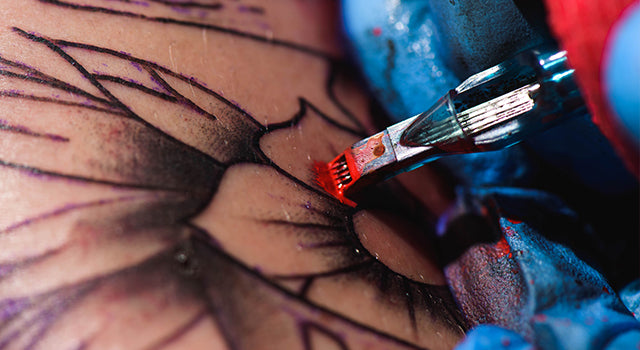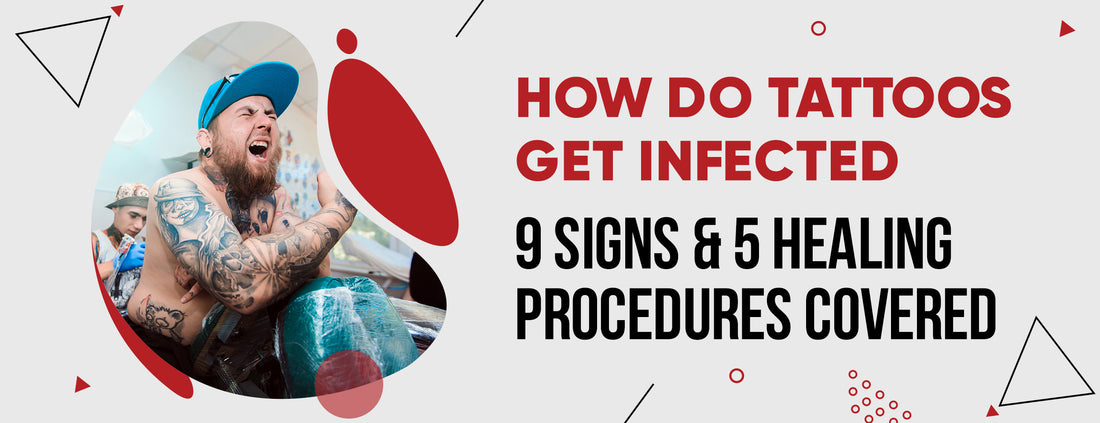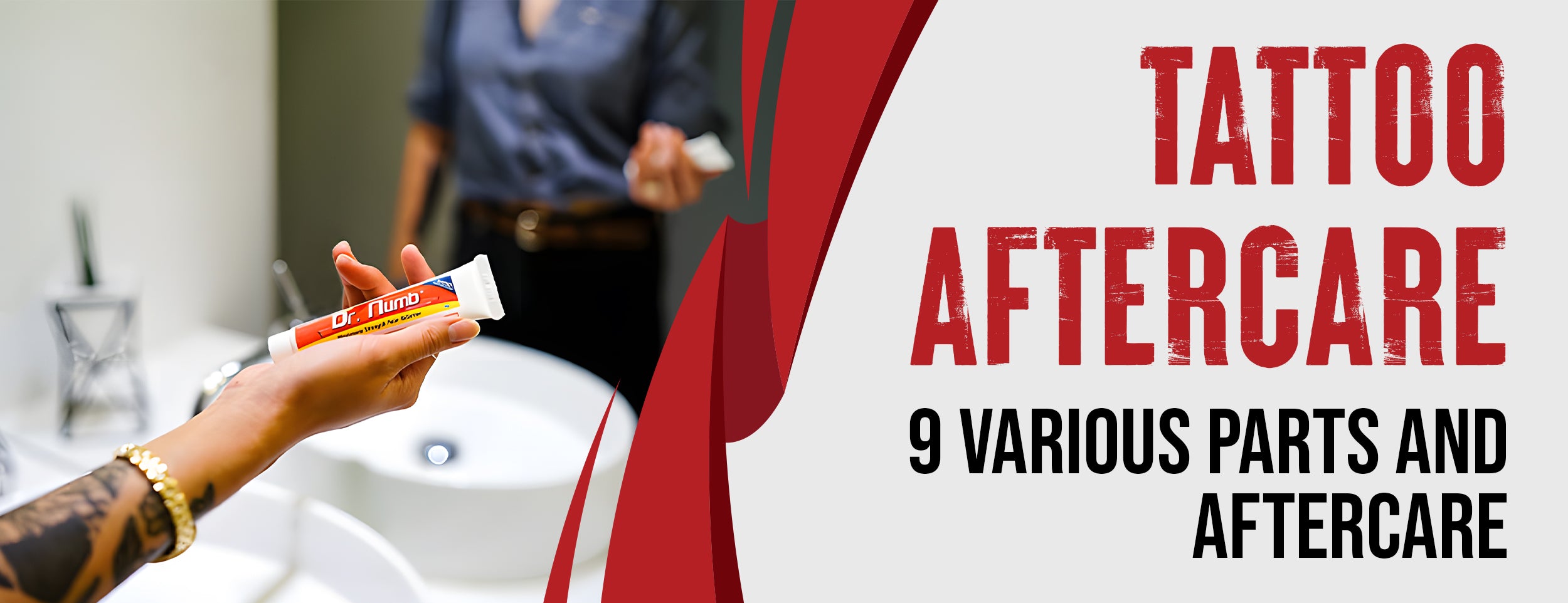An infection is one of the most common and serious risks of getting a tattoo. Left untreated, it can cause pain, damage, and even life-threatening consequences.
Tattoos consist of numerous tiny ink deposits beneath the skin's surface, and infections may occur if the ink is contaminated or if the tattoo is done in nonsterile conditions.
This article will provide a comprehensive guide on preventing and treating tattoo infections so you can enjoy your ink without concerns. We'll cover essential topics, including recognizing signs of an infected tattoo that shouldn't be ignored, steps to take if your new tattoo becomes infected, and how to maintain an infection-free tattoo.
How Do Tattoos Get Infected: An Overview

Before delving into how tattoos can get infected, we must familiarize ourselves with the telltale signs of an infected tattoo.
9 Infected Tattoo Warning Signs You Can't Ignore
When you get a tattoo, you break your skin and pierce the dermis with ink, which can lead to infection. Inflammation, redness, and discomfort are natural signs during healing, but certain signs indicate an urgent issue. You can't ignore these signs of an infected tattoo:
- Heat: You might feel slightly warm after getting a tattoo. The warmth will subside in a few days. A tattoo that feels hot or emits heat could indicate an infection. The heat indicates inflamed blood flow, suggesting your body may be combating an infection.
- Swelling: It is normal for a tattoo to experience slight swelling following the procedure, but this should diminish within a few days. If the swelling persists beyond a week or extends beyond the tattooed area, it could be a sign of infection. Swelling may also cause the tattoo to appear distorted or blurry, impacting its overall appearance.
- Excessive Discharge: Pus, a thick fluid that's yellowish or greenish, is made up of dead white blood cells, bacteria, and debris. It signals an infection, which a healthy tattoo shouldn't have. It might indicate an infection if you notice pus, crusty or sticky residue on your tattoo or bandage. Pus can also affect your tattoo's appearance, making it look cloudy or lackluster.
- Unpleasant Odor: A healthy tattoo should be devoid of any foul or unpleasant smell. Detecting an odor emanating from your tattoo or encountering a scent reminiscent of something rotten or sour when changing your bandage might indicate an infection. Such odor may signify bacterial growth and deterioration, indicative of improper tattoo healing.
- Discomfort: Post-tattoo discomfort and soreness are normal but should lessen as your tattoo heals. If pain persists for over a week or intensifies, it could indicate potential nerve and tissue damage that may impact healing and aesthetic outcomes.

- Formation of Blisters: Blisters, small fluid-filled bubbles on the skin from friction, heat, or irritation, are not normal during tattoo healing. Blisters near your tattoo may indicate an infection. They could be caused by an allergic reaction to ink or aftercare products, indicating an issue with your tattoo.
- Abnormal Scab Growth: Scabs are a natural part of the healing process during the tattoo healing process. They will naturally slough off when ready. However, be cautious of infection if scabs are excessively large, thick, or dark. Bacteria and debris can be introduced if you pick or scratch your tattoo, hindering healing and making you feel itchy and scratchy.
- Fever: A heightened body temperature, or fever, is not normal during tattoo healing. You may have an infection if you experience chills, sweating, headaches, or body aches after getting a tattoo. Fever may also indicate a systemic infection affecting your entire body, posing as a potentially severe condition requiring urgent medical attention.
- Prolonged Redness: Redness after tattoo application usually subsides within a few days. If redness around the tattoo persists beyond a week or spreads beyond the tattoo area, it could indicate an infection. For further evaluation, monitor redness with other early stages of tattoo signs (swelling, heat, pus, odor, pain, blistering, enlarged scabs, or fever).
Infected Tattoo: Steps for Healing and Prevention

An infected tattoo usually looks like red streaks or pus at the tattoo site. In most cases, an infected tattoo will not heal on its own, and if left untreated, it will worsen and can lead to serious health complications. Don't panic if you suspect your new tattoo is infected. Follow these steps to treat the infection and prevent further damage.
Here's what you need to do if your new tattoo is infected:
Step 1: Contact your tattoo artist or a medical professional. Contact the person who did your tattoo or a qualified doctor when you suspect an infection. They will assess the severity and give you the best advice.
They may recommend an in-person visit, prescribe antibiotics or other medications, or refer you to a specialist. Prompt action is crucial, as some infections can worsen rapidly and require immediate attention.
Step 2: Keep the area clean and dry. The tattooed area should be kept clean and dry to prevent infection and promote healing. Wash it gently with warm water and an antibacterial soap.
Avoid scrubbing or rubbing the tattoo, as it irritates and removes scabs. Rinse off the soap thoroughly, then pat the area dry with a clean towel. Do this at least twice daily or as directed by your tattoo artist or doctor. Avoid alcohol, hydrogen peroxide, or harsh chemicals, as they can damage the tattoo and hinder healing.
Step 3: Use prescribed or recommended topical treatments for tattoo skin infection. Apply any prescribed or recommended creams, ointments, gels, or sprays to your tattoo. These products may contain antibiotics, antiseptics, anti-inflammatories, or other ingredients to fight the infection and soothe the skin.
Apply a thin layer and cover with a sterile bandage if necessary. Only use products prescribed or recommended to you by a tattoo artist. Follow the instructions for proper usage and application frequency.

Step 4: Avoid picking or scratching your tattoo to avoid infection. Resist the urge to scratch or pick at your tattoo, even if it's itchy, scabby, or blistering. Picking or scratching can worsen the infection and cause permanent damage.
It introduces more bacteria and dirt into the wound, leads to bleeding and scarring, and disrupts healing. If you experience itchiness, try applying ice or an anti-itch cream if your tattooist or doctor recommends it.
Step 5: Keep an eye on your tattoo's condition and seek additional medical attention if necessary. You should see improvement within a few days of following these steps.
If the infection doesn't improve or worsens after a week, spreads to other parts of your body, or you experience symptoms of tattoo flu or severe pain, you must contact your doctor immediately. They can provide advanced infected tattoo treatment options such as intravenous antibiotics, wound debridement, skin grafting, or surgery.
Following these steps promptly and carefully increases your chances of healing and preserving your tattoo's quality. Remember that prevention is the best approach. In the next section, we'll guide you on how to keep your tattoo infection-free and avoid these problems in the first place.
Infection-Free Tattoos: Discover the Secrets

Preventing tattoo infections is crucial to the longevity and appearance of your tattoo. Following simple steps before and after getting your tattoo can ensure optimal healing and free it from infection.
Here's how to make your tattoo infection-free:
Tattoo Care is Key: Take excellent care of your tattoo by following the aftercare instructions provided by your tattoo artist. They are experts and will give you specific guidelines on cleaning, moisturizing, protecting, and healing your tattoo.
It's important to stick to these instructions for the best results. If you have any questions, don't hesitate to contact your tattoo artist for guidance.
Let Your Tattoo Breathe: Avoid suffocating your tattoo with bandages or clothing. Oxygen is crucial for proper healing and to prevent bacterial growth.
Only cover your tattoo with a sterile bandage for a short period after getting it done, according to the tattoo artist. After that, give your tattoo as much exposure to air as possible unless you need to protect it from dirt, sun, water, or other irritants.
Monitor Healing Progress: Regularly check your tattoo's healing process by gently touching it with clean fingers. Pay attention to its temperature, texture, moisture, and pain level.
An infection may occur if you notice unusual changes like excessive heat, swelling, dryness, or pain. Contact your tattoo artist or doctor immediately to take appropriate action.
By diligently following these steps, you can ensure your tattoo remains infection-free and maintains its beauty for years. If you still have questions about tattoo infections, we'll address some of the most commonly asked ones in the following section, providing more information and tips.

Conclusion
We have provided comprehensive information about tattoo infection prevention and treatment, allowing you to cherish your ink worry-free. Pay attention to the signs of an infected tattoo - learn how to respond.
Keep your tattoo infection-free by following our tips and advice. Your tattoo's health is essential, so seek professional treatment if needed. Reach out to your tattoo artist or doctor without hesitation if you have concerns or notice signs of infection. Enjoy a well-healed and beautiful tattoo for years to come.













![Antibiotics and Tattoos: 3 Risks and 3 Effects [with 4 Precautions]](http://drnumb.com/cdn/shop/articles/Can_You_Get_Tattooed_On_Antibiotics__3_Risks_and_3_Effects_4_Precautions.jpg?v=1714128292)

